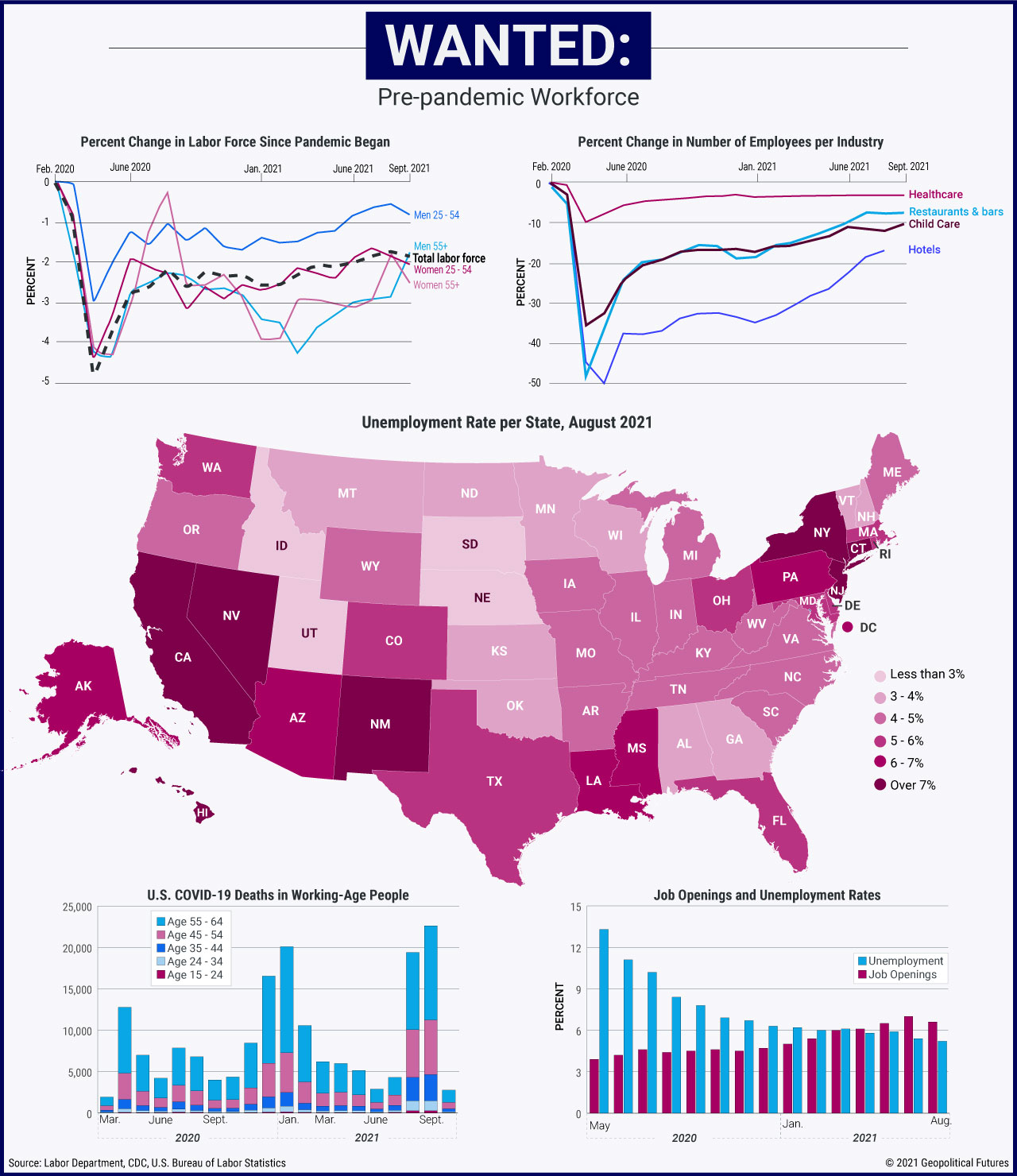One of the more complicated aspects of the current economic volatility accompanying the rebound from the pandemic in the U.S. is the apparent labor shortage. Employment has yet to come close to recovering to pre-pandemic levels. Wages are rising for some segments of the population. And temporary stimulus measures like boosted unemployment insurance programs have tapered off. Yet, in many sectors, workers are still extremely hard to come by. There are many reasons for this, ranging from lingering leeriness among some to work in public-facing jobs while the virus is still lurking to the fact that many parents who would otherwise be working are choosing or being forced to stay home and look after schoolchildren or vulnerable family members. Some companies in booming industries are reluctant to scale up to meet demand, out of fear of a bubble bursting.
In any period of economic upheaval, there’s an inevitable amount of reorganization, and it simply takes time for labor supply and demand to return to equilibrium – and the character and scale of disruption in 2020 were unique. During downturns, it’s common for workers to, say, take the opportunity to go back to school or start a family. Either way, this is one aspect of the current dysfunctional economic environment that’s likely to improve relatively quickly, especially if the U.S. can finally bring the pandemic to manageable levels.





 Special Collection – The Middle East
Special Collection – The Middle East